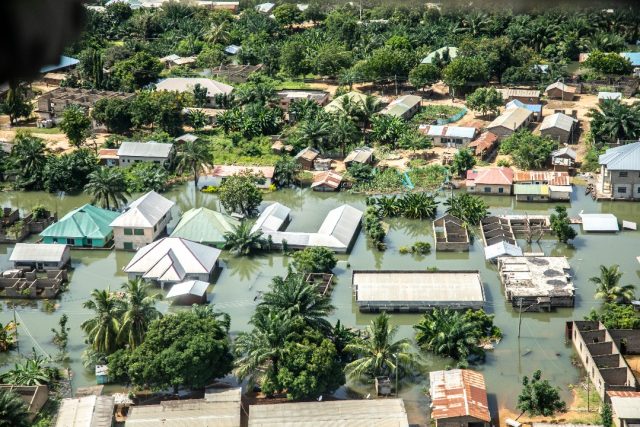By Afia Agyapomaa Ofosu
Surprisingly, Ghana lacks spillage control methods, even after its first president, Osagyefo Dr. Kwame Nkrumah, inaugurated the country’s hydroelectric power project, the Akosombo dam, 57 years ago.
For those who lost their homes, means of subsistence, and treasures in the impacted flood towns, October was regrettably a month of destruction and tragedy. Since 1966, in order to prevent over-topping and guarantee safe operations, the Volta River Authority (VRA) has released water from the reservoir whenever the Akosombo Dam detects high water inputs.
How long will this cycle of development persist in the developing nation of West Africa? For what length of time will people who live in eight settlements downstream of the Volta River continue to be uprooted? This is the perfect time, if ever there was one, to discover technical solutions for preventing spills. In order to solve this problem, we require a feasible and permanent resolution.
Three actions, if fully implemented, would help address the ecological and social costs and injustices brought about by hydroelectric dam development projects, according to a study titled “Development’s Shadow: The Downstream Human Consequences of Dams” by Brian Richter, Director of Global Freshwater Program and the Nature Conservancy, Charlottesville, Virginia, in the United States of America.

Mr. Richter mentioned five African dams—Kafue Gorge and Itezhitezhi in Zambia, Kainji in Nigeria, Aswan High in Egypt, and Manantali and Diama in Senegal and Mali—where rivers were built to provide an alternative to flood control. He recommended using such rivers for the cultivation of aquaculture.
“The progeny of a fish that spawns on a floodplain will have numerous advantages over fish that are born in the river. When floodwaters overflow onto a floodplain, it gets warmer and more nutrient-rich, which is very beneficial to the development of baby fish. The drowned vegetation of the floodplain harbors an abundance of insects to eat and offers hiding spots for baby fish from larger fish and other predators. Which fish grow the fastest, live the longest, and reproduce the most can all be significantly influenced by these benefits”.
He also mentioned that rice and sorghum production, or food-based agriculture, might be practiced in areas designated along the dams.
“There is a great deal of potential to increase agricultural production since dams can give downstream areas a more consistent and reliable supply of irrigation water. Nevertheless, the original occupants of the downstream floodplains are not usually the ones who benefit from these new agricultural prospects”.
He claims that flood zones might be set aside for the management of animals.
“Livestock managed by riverbank communities and transhumant pastoralists, particularly those in arid and semiarid locations, depend on the availability of floodplain grazing for their survival. This is especially true toward the conclusion of the dry season, when water levels typically reach their lowest point. Inland grazing is available throughout the rainy season, but the value of grazing in floodplain areas grows as the number and quality of these inland pastures decline”, he said.
Getting to the bottom of the flood plain from the Akosombo Dam requires a national strategy. We can’t keep looking for victims in order to reconstruct the community because it appears that places around the dam are dangerous for habitation. Permanent safe havens that allow victims to resume their lives and socioeconomic activities are something that they should be granted.
Meanwhile, as the nation implements policies to fully employ communities for good purposes, land custodians, through private partnerships, might allot lands or inexpensive housing units for them.
Let us collaborate with other prosperous countries to address the social injustices frequently linked to dam projects if we are unable to provide the necessary financial and technical help.
The writer is a journalist E-mail: prissyof@yahoo.com







































